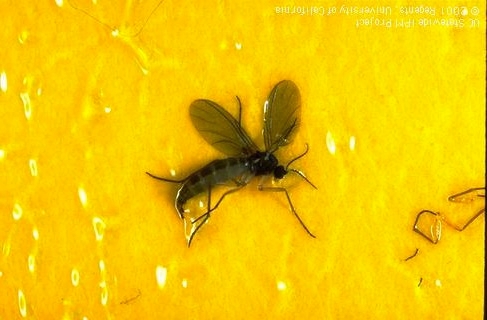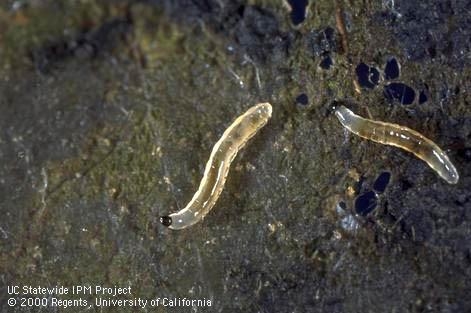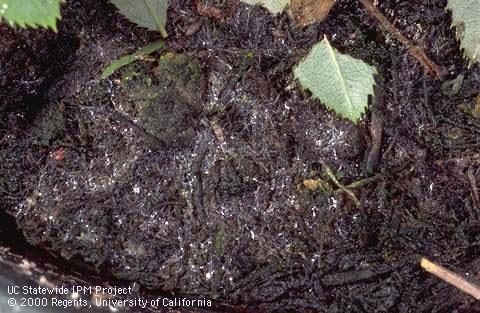[From the July 2014 issue of the UC IPM Retail Nursery & Garden Center News]

Adult fungus gnats don't harm plants or people, but they can be annoying. On the other hand, fungus gnat larvae (Figure 2), which live in soil and feed on roots, can be damaging when their numbers are very high, sometimes causing plants to wilt. Their feeding may cause seedling plants to die or injure roots, allowing entry of plant pathogens. Larvae are whitish to clear with black heads and, with a length of less than ¼ inch, very difficult to see. When abundant, they may leave shiny trails on the soil surface.

Biological controls. Where cultural practices haven't effectively controlled the problem, customers may ask about treatment options. Although insecticides such as pyrethrins are available for this use, the safest and often most effective products for home use are the commercially available biological insecticide Bacillus thuringiensis subspecies israelensis (Bti) and the insect-attacking Steinernema nematodes.
Bacillus thuringiensis ssp. israelensis is the most common of these products on store shelves. Mosquito Bits and Gnatrol are common trade names. Bti is a bacterial by-product that kills flies and is related to B. thuringiensis ssp. kurstaki products available for caterpillar control, but Bti is toxic only to fly larvae such as mosquitoes, crane flies and fungus gnats. Repeat applications are often needed for long-term control.

For more information on fungus gnats and their management see Pest Notes: Fungus Gnats.